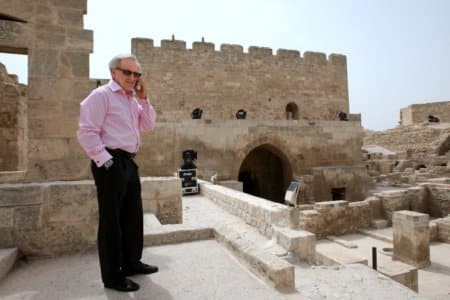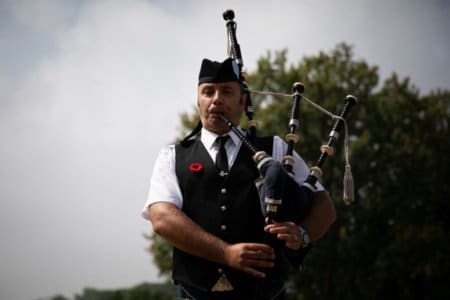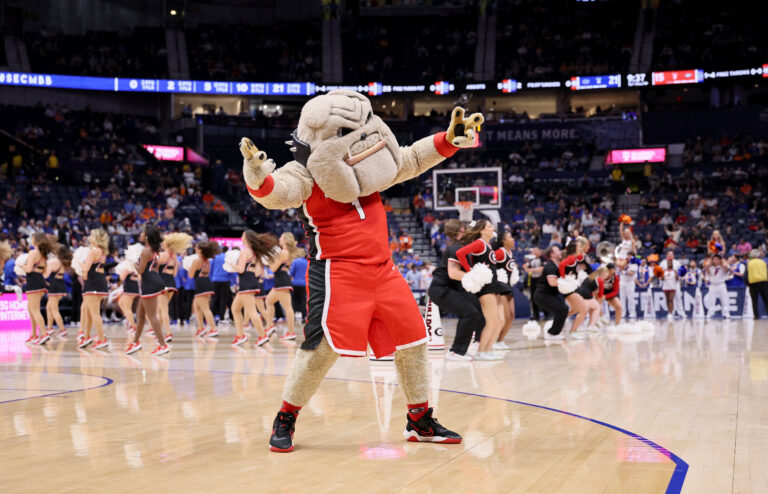
Athletics are a big part of school and university life. They are the heartbeat of the school and bring the community together through exciting inter-school sports events.
It’s also during these events that you may have spotted a furry (or ferocious) friend or two – they are school or university mascots, often an animal or a figure.
Animal motifs such as tigers, bears, eagles, and dogs are quite common. Some schools or universities choose other critters, such as squirrels, lizards, and bees, or even vegetables like corn or okra. No, we’re not kidding.
So what exactly is a university mascot, and what purpose do they serve, other than being a character on the field?
What is a university mascot?
Perhaps an iconic mascot many are familiar with is the wildcat from Disney’s “High School Musical.”
Fun fact: the real East High School mascot is actually a leopard.
A mascot helps form a sense of identity for students and alumni. It becomes a recognisable symbol for the school or university, in both the campus and surrounding communities. It’s also great for providing entertainment and builds school spirit.
But how did they come about in the first place?
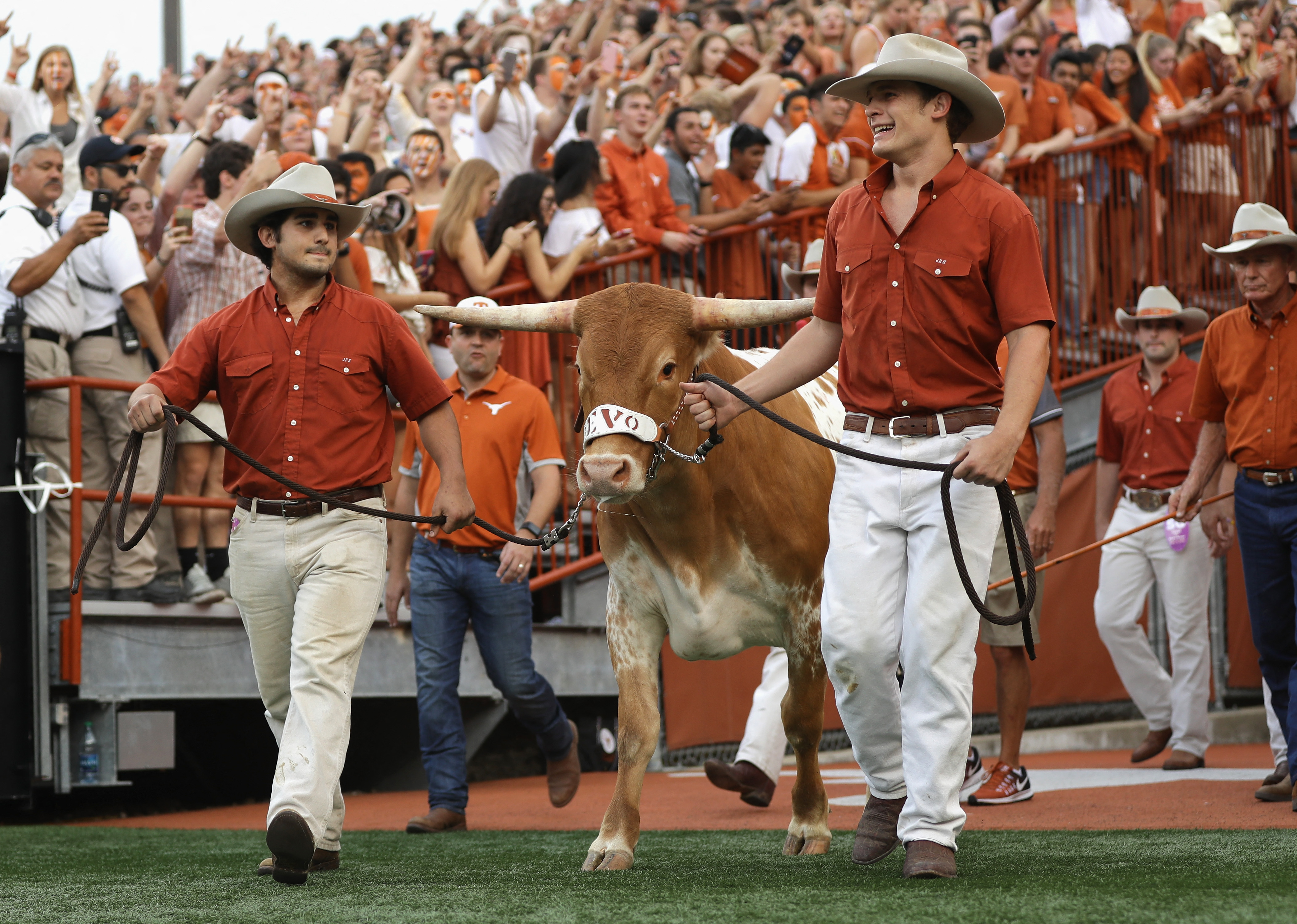
The University of Texas derived its color scheme from its mascot, Bevo. Source: AFP
The history behind a school/university mascot
The concept of a school mascot originated in the 1800’s. A little boy named Chic, who carried bats and ran errands for baseball players, became known as the team’s good luck charm.
According to an 1883 issue of The Sporting Life Magazine, it was quoted that “the players pinned their faith to Chic’s luck-bringing abilities.” Combined with a little superstition, it became the foundation for the concept of mascots in modern-day school life.
In the late 19th to early 20th centuries, school and university mascots were live children and animals. In fact, the first live animal college mascot was Yale’s Handsome Dan, a bulldog who attended football and baseball games in the late 1890s.
It was only later on that the idea of costumed mascots began making their way into the hearts and minds of the American sports fan, thanks to the popularity of Jim Henson’s Muppets.
Today, school and university mascots not only play a pivotal role in their institute’s athletic matches but also reflect the identities of the local communities the teams reside in. Additionally, they are great for marketing and creating revenue opportunities through licensing, merchandising, and social media.
Take a look at some of the iconic university mascots:
University mascots that you may have heard of
Massachusetts Institute of Technology (MIT) – Tim the Beaver
Massachusetts Institute of Technology (MIT) first adopted the beaver as its mascot in 1914. The Technology Club of New York met for their annual dinner with President Maclaurin as the principal guest of the evening. It was then that a pair of handsomely mounted beavers were presented, with the proposal that the animal should be adopted as MIT’s mascot.
The reason? They liked the beaver’s unique industry and its modest and inconspicuous acquisitiveness. The university was fond of the animal’s excellent engineering and tech credentials – plus the fact that the beaver is a true native of North America.
The university takes its mascot very seriously, even creating a brand guide for those interested in using his likeness.
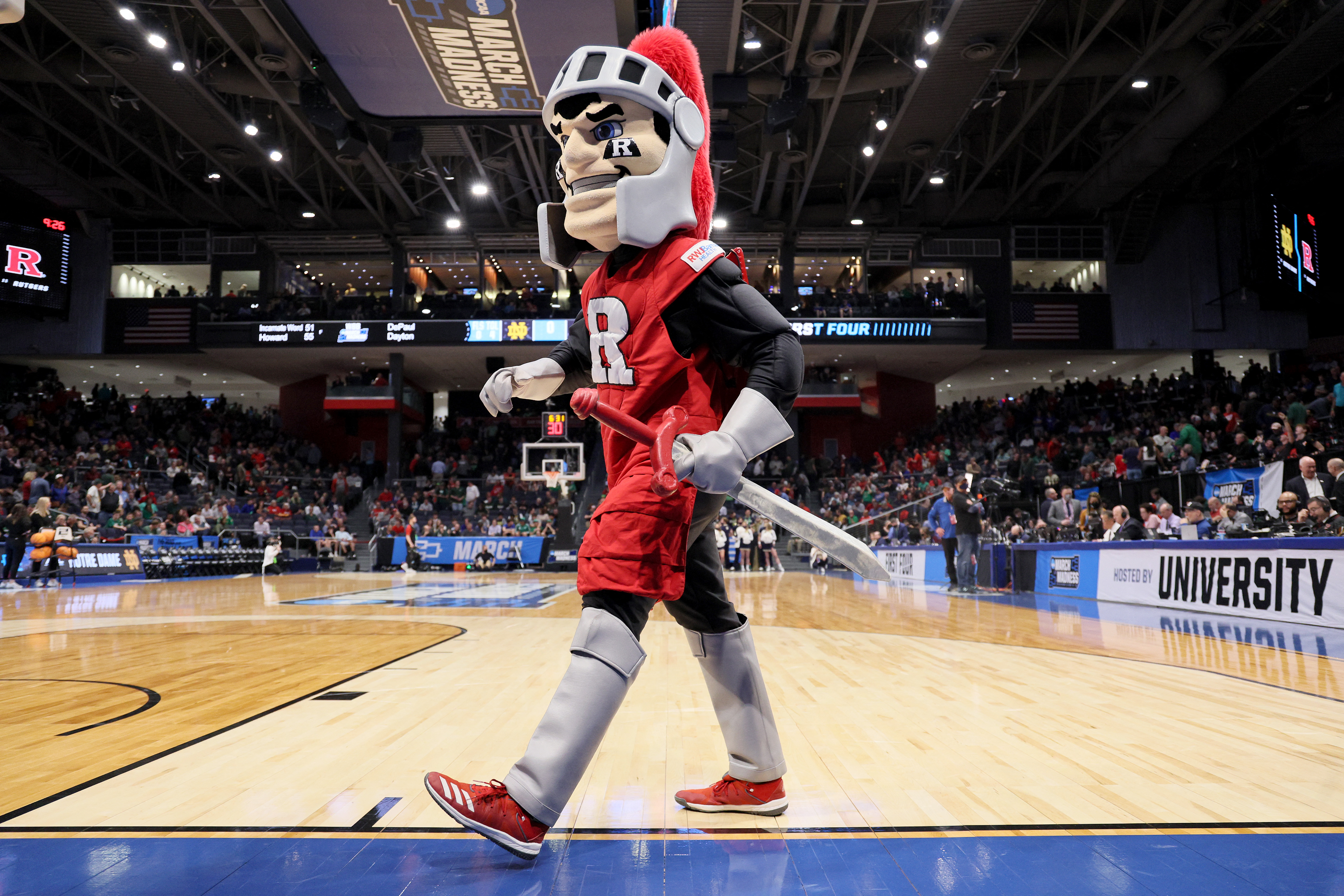
Why Scarlet Knight? The name was chosen for its striking, vivid colour – and also because it was easy to obtain. Source: AFP
Rutgers University – Scarlet Knights
Rutgers University is famously known for being the “Birthplace of College Football,” hosting the first-ever intercollegiate football game on November 6, 1869. The university athletes call themselves the Scarlet Knights, fondly naming their knight mascot Sir Henry.
Sir Henry is seen at all sporting events held at Rutgers. During his spare time, he also makes appearances at events outside the university.
He’s very well known around the state and the country, and makes hundreds of appearances a year.
University of Chicago – Phoenix
While Maroons is the official nickname of the University of Chicago‘s sports teams, the Phoenix – which is featured as part of the University’s shield – serves as the school’s mascot.
The choice to use the mythical creature as the mascot was inspired by the Great Chicago Fire of 1871 and the subsequent “rebirth” of the city out of the ashes – literally.
Now, the phoenix mascot is fondly named Phil, and he can usually be found pumping up the crowd at football games, basketball games, and other special events. True to the Maroons name, his costume is a deep red.
Princeton University – The Tiger
Princeton University’s original mascot was a lion, inspired by lion statues that had been a gift from Woodrow Wilson. In 1911, the mascot was officially switched to a tiger.
The growing use of the tiger – rather than the lion – as Princeton’s mascot boiled down to two things: the college cheer, which contained a “tiger” as a rallying word, and the growing use of orange and black as the college colours.
“While the tiger stands defender / Of the Orange and the Black.”
The official Tiger mascot costume made its first appearance in the 1940s at the university’s basketball and football games.
University of Pennsylvania – The Quaker
The University of Pennsylvania’s mascot, Quaker, is a nod to the religion adopted by William Penn who established Pennsylvania as a Quaker Province.
The mascot has had a few wardrobe changes over the years, but the biggest change happened during the football game celebrating 125 years of Franklin Field. The Quaker was reintroduced with a fresh facelift, a stylish new hat, and most notably, a collection of spiffy new clothes.
Playing the Quaker is apparently a much-coveted role with strict requirements. Candidates must be between 5’10’’and 6’ tall and have to keep their identity secret until graduation.
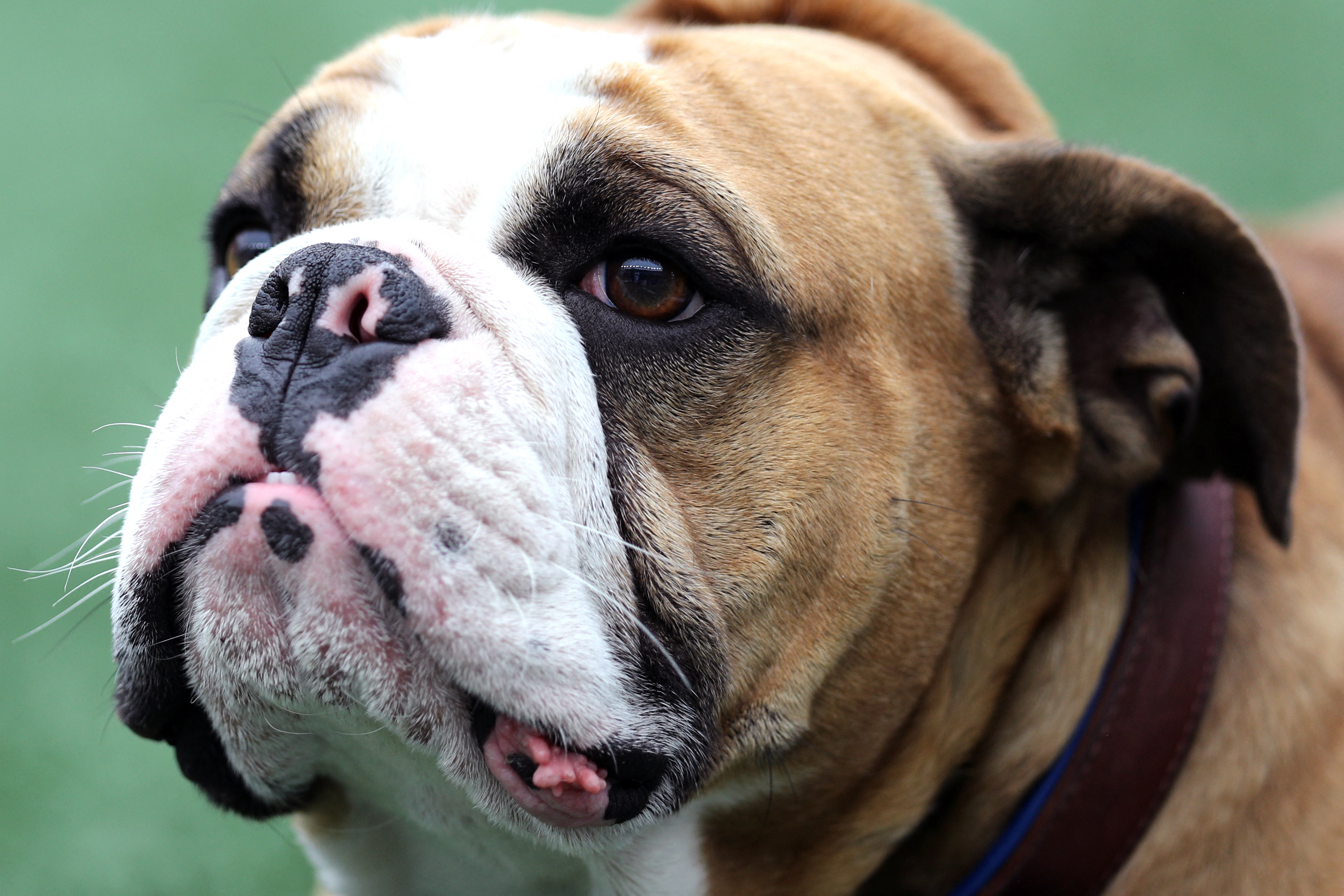
Handsome Dan XIX, also known as Kingman, was born on January 2, 2021, and picked out of a litter of nine Olde English Bulldogge puppies. Source: AFP
University mascots who are real animals
Furry, feathered costumes aren’t just the only mascots schools and universities use. Some university mascots are actually real animals!
Yale University – Handsome Dan
Famously known for being the first institution to adopt a live animal mascot, Yale University is proud of Handsome Dan, their bulldog.
He first debuted in the early 1890s, when Andrew B. Graves, a member of the crew and football teams, adopted him from a local blacksmith and began bringing him to sporting events.
After the first Handsome Dan passed away, he was stuffed and locked in a glass cabinet in the Payne Whitney Gymnasium. Following the death of the original Handsome Dan, the school went without a live mascot for three decades until the class of 1937 raised funds to adopt a replacement in 1933.
As of 2023, there have been 19 Handsome Dans, with the most recent arriving on campus in 2021. He now shares his duties with a costumed bulldog mascot and spends his spare time posting on his Instagram or hanging out with his bestie Heidi, the Yale Facility Dog.
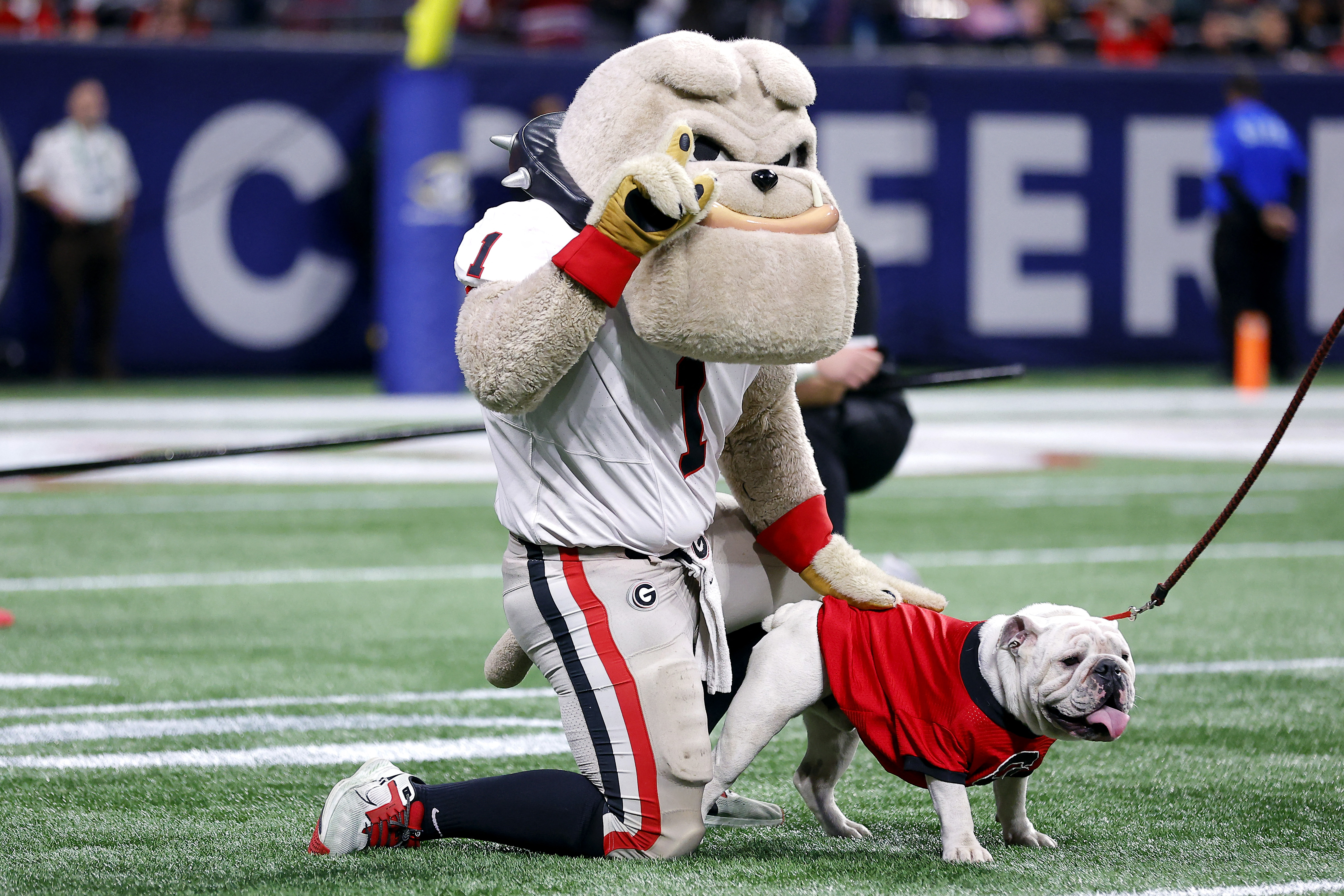
Uga and his costumed companion are a hit at games. Source: AFP
The University of Georgia – Uga
Uga the bulldog is the official live mascot of the University of Georgia Bulldogs. The mascot is arguably the nation’s most well-known mascot, solely consisting of pure white English bulldogs from the Frank W. “Sonny” Seiler family of Savannah.
The name “Uga” is an abbreviation for the university, bestowed by William Young of Columbus, a law school classmate of Seiler. Every generation of Uga is followed by an identical white bulldog after retirement or death – Ugas I, II, III, IV, V, VI, VII, and VIII are buried in marble vaults within the university stadium near the main gate in the embankment of the South stands.
The memorial plot attracts hundreds of fans and visitors a year. It’s become a tradition for players and fans to place flowers on the graves before each home game, hoping it will bless them with good luck.
The current Uga is a young English bulldog named Boom, who succeeded Uga X, Que.
The University of Essex – Pebbles the cat
Pebbles has been roaming the grounds of the University of Essex for over 13 years, and the elderly lad enjoys attending lectures, sleeping in the university library, or lounging around the nearest available radiator. He even has his own registration card – he “studied” in the Department of Government.
While he’s the unofficial university mascot, many refer to him as such, regardless. He can be seen perched around campus, regularly surrounded by excited students.
Thanks to Pebbles’ presence, the school set up his own social media pages and started selling Pebbles merch in the Everything Essex shop on campus. You can find mugs, keychains, magnets, and even stress squeezies with Pebbles on them.
Fund raised through merchandise sales go towards his food, vet visits and, most recently, a cat statue on campus to commemorate the feline.
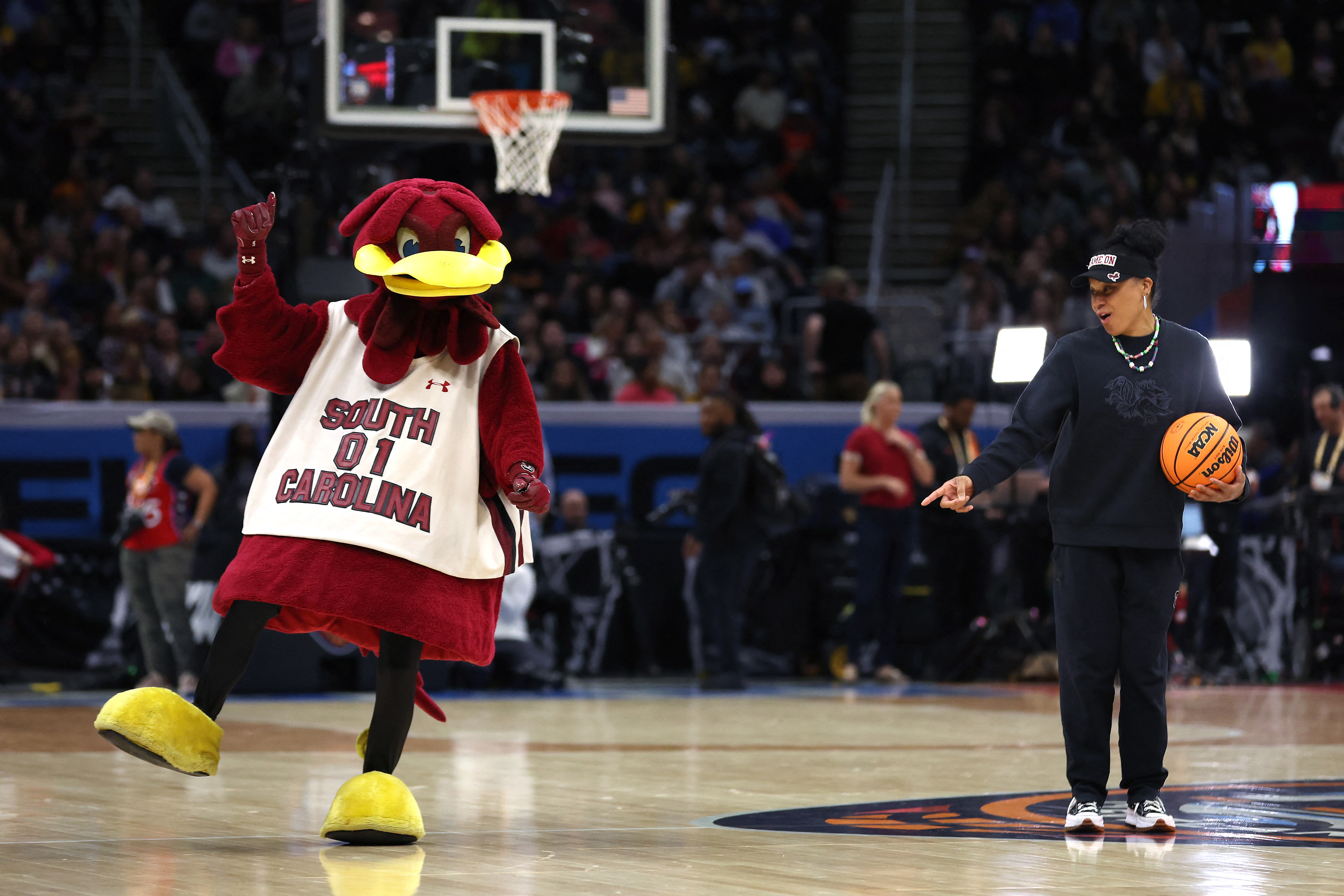
Cocky is never too chicken to pump up school spirit. Source: AFP
University of South Carolina – The General (Sir Big Spur)
University of South Carolina athletes are known as Gamecocks, courtesy of their mascot – a rooster.
The rooster was recently renamed to The General, in homage to Revolutionary War General Thomas Sumter, whose nickname “Fighting Gamecock” created the original moniker for Athletics. But some refer to him by his old name, Sir Big Spur. He often appears at events and even has his own perch where he sits during games.
For cheerleader rallies, the university brings out Cocky, a fan favourite at all of the Gamecock’s sporting events. The costume adopts the university’s colours, even coming with its own sports jersey.
When Cocky is off the clock, you can find him working hard in the local community with Cocky’s Reading Express, where he travels around the state with the university’s students to read to elementary school students.
Bevo is not here for this mascot meeting. #HookEm pic.twitter.com/KXgaQzGm0W
— Danny Davis (@_dannydavis) January 2, 2019
University of Texas – Bevo
The original University of Texas mascot was a tan and white dog named Pig Bellmont, before Bevo the longhorn was introduced.
The original Bevo was first brought out during a 1916 matchup between UT and Texas A&M. It was scrawny, hard to handle, and not a fan favourite of the students. Despite his shortcomings, he was fondly referred to as “Bevo” in the UT’s Alcalde alumni magazine’s piece that covered the university’s 21-7 win.
“His name is Bevo,” the piece declared. “Long may he reign.”
While the first Bevo unfortunately ended up as the barbecued main course for the January 1920 football banquet, his head and horns were mounted and added to the university’s athletic department.
Rest assured, the Bevos that followed in his hoofprints after that all enjoyed a comfortable retirement at a private ranch.








